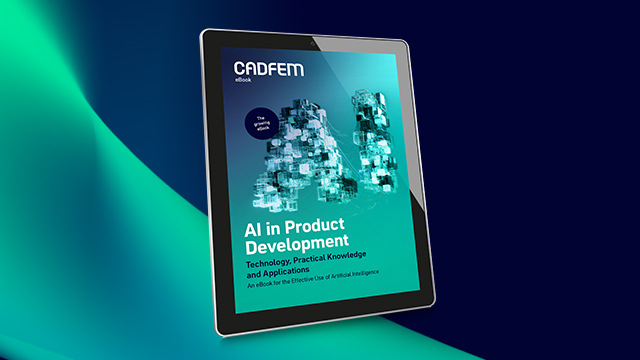Customer value through the use of AI and simulation at Danfoss
Gerhard Friederici
10.06.2025
AI Projects in Digital Engineering Accelerate Automation and Simulation
Vladimir Shamai, Head of Digital Engineering Enablers at Danfoss, reports on the advantages and opportunities offered by the use of artificial intelligence (AI) and simulation. The focus is not only on customer value and increasing efficiency in digital engineering. Here are some of his guiding principles with explanations.
Using AI to sharpen the focus on the why and how
I believe that in the short term, AI will help increase productivity in all business functions. In the long term, AI will enable us to increase customer value. The resources freed up by increased productivity will allow us to sharpen our focus. We will concentrate more on why and what we are developing solutions for, rather than on how we implement our tasks with a specific technology.
Gaining new insights from data and accelerating simulations
It is important for us to have a precise understanding of our customers' applications. Only then can we offer solutions that are specifically optimized for them. AI will help us gain more insights from data. This will enable us to perform simulations and automations faster in order to accelerate the development of new and better products.
More customer value through more internal knowledge and more simulations for idea generation
Since AI enables us to significantly reduce simulation times, our design engineers have more time to use simulation for idea generation in their everyday work. At the same time, AI makes internal knowledge more accessible. Based on this, we can gain greater expertise to create additional customer value with our products and solutions, which was not previously possible. This includes making our products easier to use for customers as well as improving our ability to develop with multiple teams simultaneously.
TIP: Hype is good – but benefits are better!
Industry is at a revolutionary turning point: artificial intelligence (AI) is no longer a vision of the future, but a tangible competitive advantage. But how can this technology be used in a targeted and effective way in product development? Our eBook not only provides answers, but also delivers practical knowledge with real added value.

AI comes into play in complex processes involving lots of data points
The identification and selection of internal use cases is based on a targeted analysis of the biggest cost drivers in our business model and the potential for efficiency gains through AI. Through our close customer relationships, we identify customer problems and then look at the best way to solve them. In these “business cases,” the focus is squarely on customer value. AI is usually used as a technology for particularly complex processes—such as optimization and prediction—that involve many data points.
We often discover new potential when something becomes technologically possible. For example, one project aimed to reduce simulation time from hours to seconds. Although we saw added value here, we realized that we did not have enough data to train the model and that the software was not yet mature enough to be made available to all our engineers. This is where our quality standards come into play.
AI significantly reduces simulation times and creates space for creative idea generation. At the same time, internal knowledge becomes more accessible, creating additional customer value through better products and more efficient collaboration.
One example of AI use is the optimization of heat generation and distribution
We have been offering solutions that incorporate AI for quite some time. One example is how we use AI to optimize heat generation, distribution, and consumption. Among other things, AI is used to make consumption predictions in complex control environments with multiple data sources and large amounts of data. We also use AI in the context of our digital services, which we are developing as a separate business area and offering to our customers.
For the internal optimization of AI use, we have several virtual communities that help to organize things and quickly disseminate new knowledge. We organize regular training courses and presentations by industry leaders and have an extensive partner network with in-depth exchanges and development partnerships with companies such as Google and Microsoft.
AI projects require flexible planning and courage to try out new ideas
We have found that AI technology is developing so rapidly that we cannot plan linearly when coordinating our strategy. This requires flexible planning as well as the courage to try out new ideas without knowing immediately whether they will be successful.
Simulations provide synthetic data when field data cannot be collected
Based on our many years of application experience, it is clear to us that simulation will play a crucial role in generating synthetic data for use cases for which we cannot collect field data. In the process, both technologies will merge and reinforce each other.
Ansys HFSS
Industry standard for determining the radiation and transmission behavior of high-frequency electromagnetic fields.





